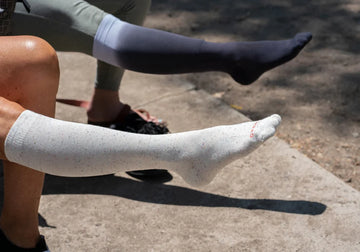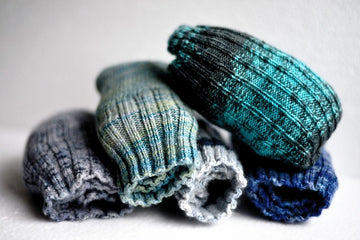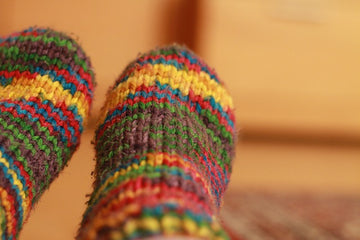
Flying can be a great way to travel, but sitting for long periods can lead to uncomfortable leg swelling and even a risk of blood clots. Compression socks can be a helpful tool to combat these issues. This article will discuss the ideal timing for wearing compression socks during air travel, along with additional tips to maximize their effectiveness and ensure a comfortable flight.
When to Put on Compression Socks for Flying
The best time to put on compression socks for flying is right before you board the aircraft, while you're waiting at your gate. There are a couple of reasons for this:
- Convenience: Airplane bathrooms are small and can be awkward to maneuver in, especially with compression socks that can be tight and a little tricky to put on. Putting them on at the gate gives you more space and privacy.
- Efficacy: Compression socks are most effective when you wear them for the entire duration of your flight. This helps to improve circulation from the moment you take off to the moment you land.
Some people also recommend putting on your compression socks as soon as you wake up on the day of your flight, especially if you have a history of leg swelling or circulation problems. This can help to reduce any swelling that may occur even before you get to the airport.
Here are some additional tips for wearing compression socks for flying:
- Choose the right size. Compression socks should be snug but not uncomfortable.
- Apply lotion to your legs before putting on the socks. This will help to make them easier to put on and prevent them from irritating your skin.
- Get up and move around every few hours during your flight. This will help to improve circulation in your legs.
- Drink plenty of fluids during your flight to stay hydrated. Dehydration can contribute to leg swelling.
Should everyone wear compression socks on long flights?
Compression socks are recommended for long flights especially for those at risk of blood clots. This includes people with:
- Varicose veins
- Personal or family history of deep vein thrombosis (DVT)
Even if you are not at high risk, compression socks may still be helpful for reducing leg swelling and discomfort during long flights.
What is the best level of compression socks for travel?
20-30 mmHg is the sweet spot for travel compression socks. It offers good benefits without being too tight for comfort on long journeys.
Can I wear compression socks through airport security?
You absolutely can! Compression socks are allowed by the Transportation Security Administration (TSA). They don't trigger any security flags and you can wear them right through security.
Just a heads up, you might be asked to take your shoes off during screening, so be prepared to slip them back on after. If you have any concerns about a private screening due to a medical condition, feel free to talk to security personnel.
When should you not wear compression socks?
Tight compression socks and PAD being a bad combination. Here are other situations where you might want to skip the compression socks:
If you have any skin conditions or open wounds on your legs. Compression socks can irritate the skin and slow healing.
If you're pregnant and haven't been prescribed them by a doctor. While they can help some pregnant women with swelling, it's best to consult a doctor first.
If you're constantly lying down or inactive. Compression socks work by squeezing your legs to improve circulation against gravity. They're not as necessary when you're horizontal.
If you experience any discomfort or pain while wearing them. This could be a sign they're too tight or not a good fit for you.
If you're unsure whether compression socks are right for you, talk to your doctor. They can advise you on the appropriate pressure level and fit for your needs.
How many hours a day should you wear compression socks?
The recommended wearing time for compression socks depends on the type and purpose:
For medical reasons: If your doctor prescribed compression socks for a circulatory condition, you might need to wear them all day, possibly even at night.
General use: For everyday wear or preventing minor swelling, most compression socks are safe for a few hours.
Here's a tip: Always follow your doctor's instructions for wearing compression socks.
Conclusion
Compression socks offer a range of benefits for flyers, particularly those at risk of blood clots or prone to leg swelling. By following the tips provided in this article, you can optimize the use of compression socks and ensure a more comfortable and potentially safer flying experience. However, it's important to consult your doctor before using compression socks if you have any pre-existing medical conditions.
Read More:
How to Measure for Compression Socks
How Do Compression Socks Work
Why Do My Legs Ache After Wearing Compression Socks
How to Put On Compression Socks
When to Put on Compression Socks for Flying
Are Flight Socks the Same as Compression Socks







